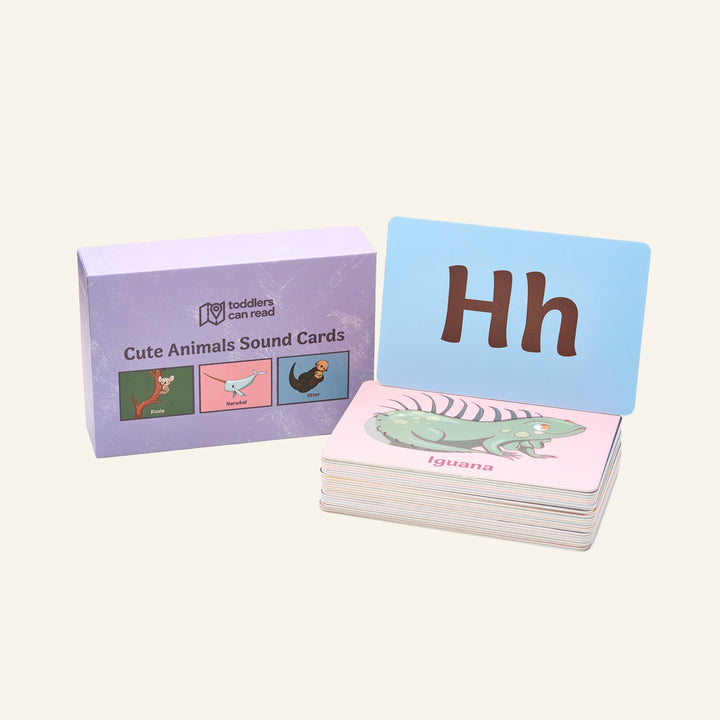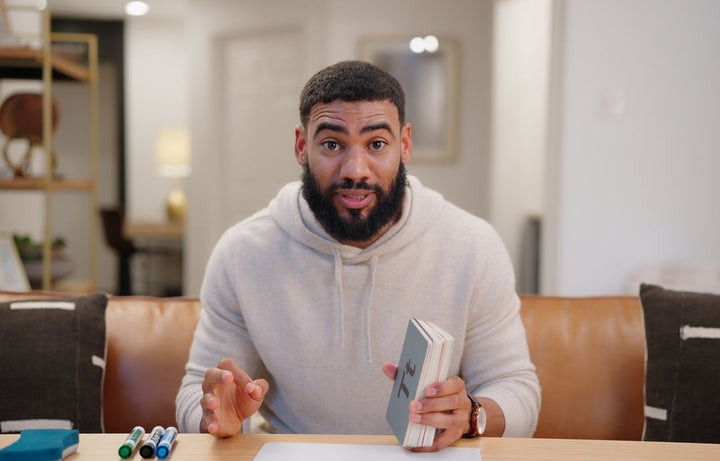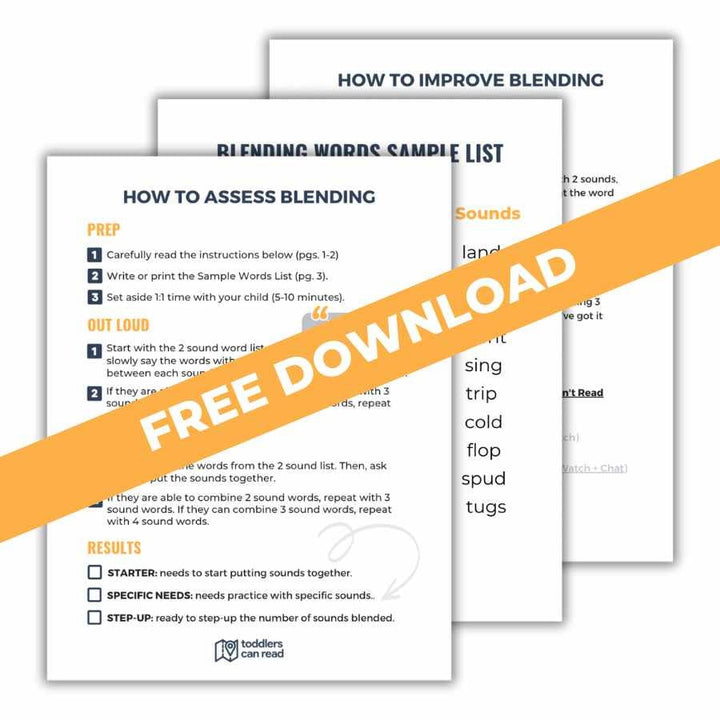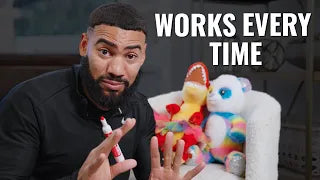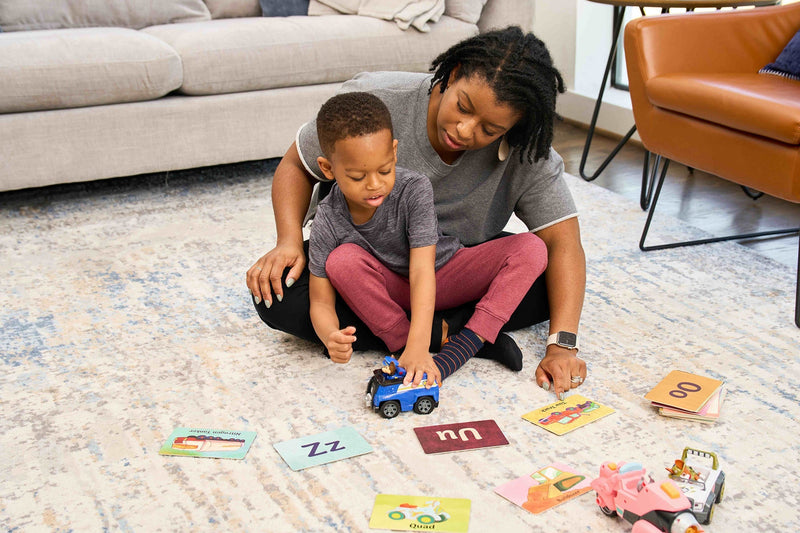No matter how long it's been since you were in elementary school, you probably remember the drama of weekly spelling tests.
On Mondays, you got a list of 10-20 new spelling words. Throughout the week (or, let's be honest, on Thursday after dinner) you practiced spelling those words over and over and over until you finally had them memorized. On Friday, you took the test... and then started all over again with a new set of words on Monday.
If you're not a great speller as an adult, you might recognize that learning how to spell through memorizing words is about as helpful as learning how to read by memorizing sight words. It's a shortcut, not a strategy.
So, let's try a better way to offer our kids spelling help.
How to Teach Spelling Step 1: Test the letter sounds.
If your child doesn't know what sound a letter makes when they see it, they can't use that letter to correctly spell the word they're hearing.
So before you start with your spelling lessons, go back to the basics and assess your kid's phonetic skills: how many letter sounds your child can recognize.
Flashcards make it easy to run through the letters quickly, so you can determine what sounds your child knows so far. Start your spelling lessons with words that use primarily those sounds. If there are letter sounds they're still working on, include words in your spelling lesson that use those letters, too. Just be sure to strike a good balance so they (and you) don't get discouraged.
Here's another way to assess what sounds they struggle with: Ask your child to write a list of words, starting simple and getting progressively more difficult. Your goal is to assess their spelling mistakes so you know which sounds are hardest for them to get down on paper.
For example, if you ask them to write pet and they write pat, your kid might be struggling with short vowel sounds. Like the difference between /a/ and /e/ sounds!
If your child is solid on individual letter sounds, you can test their knowledge of advanced phonics sounds. For example, do they know the letters that represent sounds like "SH" in shop and cash?
Head over here for more reading assessment tips.
How to Teach Spelling Step 2: Determine how many sounds they can hear.
Figure out how many letter sounds your child can hear in a word. It's the same principle as Step 1: If your child can't hear every sound in a word, they can't write every sound!
Start with two-sound words (or made-up words) like ot, if, and on. Then, move on to three-sound words like cup, dog, and bean. If they've really grasped the concept, you can try four-sound words like crab, lamp, and drop.
Again, this helps to assess what your little one already knows, what they're working on, and what you should expose them to in your next spelling lesson.
How to Teach Spelling Step 3: Practice.
In this approach, practice does not look like writing words over and over and over. Instead:
- Choose a word that has the letter sounds and number of sounds that's appropriate for your child. (You assessed this in Step 1 and Step 2.)
- Say the word to your child and have them say it back to you. It helps to have them physically identify the sounds as they go, like this...
- Have your child sound out the word first, identifying how many and what sounds they hear. Listen to them say it several times to make sure that foundational skill is covered. Listen and correct as needed. Don't move on to spelling until they've grasped the correct letter sounds.
- Watch your child write the word, and ask them to say each letter sound out loud as they write it.
- Ask your child to read the word back to you.
(This is all in my Spelling Cheat Sheet. It's free to download here.)
Pro Tips to Develop Spelling Champs
Be patient.You and your child are learning together. They're learning how to read and spell, and you're learning how to teach! So be patient with yourself and your child.
That also means trying not to fix everything at once. If there are multiple letter sounds your kid struggles to get down on paper, choose just a couple to focus on this time. Maybe in the next lesson, they'll be ready to move on to another letter sound or phonics pattern. Take your time and go at their speed.
Allow your child to struggle.Frustration is bound to happen. And in those tense moments, it can feel easier to just jump in and model sounds or spelling for your child. But that quickly slips back into the old memorize-and-you'll-be-fine-(hopefully) model of teaching spelling.
Your child has to practice and come to their own learning at their own pace. When you give them a chance to figure it out on their own, they're more likely to remember what they've learned. And they'll be so proud of themselves!
Remain consistent and present.Your 1:1 time with your child is special. You can give them words to practice that target their specific needs and that don't rely on outdated spelling practices. Practice doesn't have to take a lot of time. It's consistent, frequent, intentional practice that makes all the difference.
You've got this.
Learning how to spell can feel really hard, but you and your child can do it together.
It all begins with basic phonics concepts, which I teach in my free Beginning Reading Workshop. Join the thousands of parents who've helped their little ones grow their confidence in reading and spelling. Take the workshop today.

